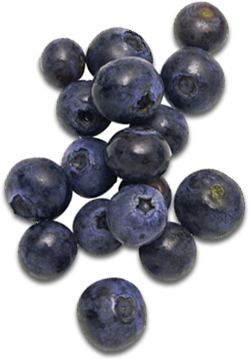no items to display
How to Reduce Sugar Intake: Curb Sugar Cravings with Real Food
Life is sweet… isn’t it? Unfortunately, many of us take that way to literally, consuming nearly our body weight in sugar every year. Real sugar in and of itself is not bad. It is the quantity of sugar consumed that is the real problem. According to the USDA, the average American consumes about three pounds of sugar each week. And this time of year, sweets are everywhere. During the last three months of the year Americans celebrate at least three major holidays where food and sweets are abundant. Although some research points to sugar addiction, most of us just like the taste of these goodies, and when they are readily available it’s hard to say no. Fear not, learning how to reduce sugar intake is as easy as understanding the science of sugar and following some simple tips.
The Science of Sugar
Our bodies and brains need sugar in the form of glucose to survive. However, our bodies only need about two teaspoons of sugar in the blood stream at any one time. Unfortunately, the quantities most Americans consume, puts them at risk for obesity, high blood pressure, cancer, liver disease, diabetes and heart disease. A recent study published in the Journal of the American Medical Association (JAMA) in February 2014 showed a direct connection between increased sugar consumption and an increase in the incidence of cardiovascular disease.
Here are some practical things you can do to help reduce sugar cravings.
Avoid processed food. Many processed foods often contain harmful sugars such as high fructose corn syrup (HFCS). HFCS masks an important satiation hormone in our bodies called leptin. When the body doesn’t recognize that leptin is present, the brain doesn’t get the message that the body is full; so we continue to eat.
Eat naturally sweet real food. Fruits, vegetables and some spices are naturally sweet. Nature provides us with all of the sugar we require. The more real food you eat, the more you will be able to taste the natural sugars contained in these nutritious alternatives. Fruits and vegetables are also high in fiber, which allows the body to slowly absorb the natural sugars they contain, which in turn provides a steady stream of energy. Try them raw, lightly cooked (less than 3 min), or even frozen. Look for richly colored produce, which contain higher amounts of antioxidants that are naturally anti-inflammatory.
Be mindful of your emotions. Many of us are emotional eaters, and this is especially true this time of year when emotions are running high. Sugar can act as a natural anti-depressant as it has a direct effect on a neurotransmitter in the brain called dopamine. When you eat sugar, dopamine is released causing a bit of a sugar high. The problem is that it is short lived and when dopamine levels drop, you may crave more sugar to regain the feeling that high levels of dopamine provide.
Skip the artificial sweeteners. New studies suggest that artificial sweeteners can make us crave more sugar. One large, long-term study published in the Journal of Clinical Nutrition linked artificial sweeteners to a 47% increase in body mass index (BMI). Another study released in September 2014 showed that when mice consumed artificial sweeteners it actually increased their blood sugar more than those mice who drank sugar water.
The best way overall to kick the sugar habit is to just eat real food. Nature has provided us with all of the sugar our bodies need in fruits, vegetables, grains and legumes. You may find that the more you eat real food, the less you will crave the added sugar. The next time you get that sweet tooth, reach for a delicious apple or a crispy carrot. Overtime, you will begin to notice that your sweet tooth isn’t quite as sweet as it used to be.
How will you reduce sugar cravings this winter?






